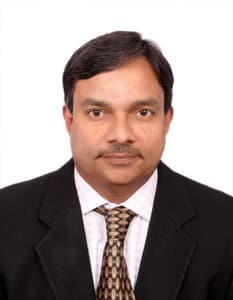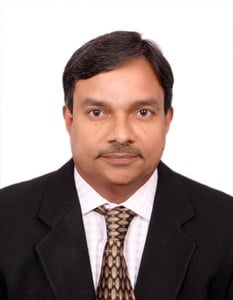India is still in its nascent stage when it comes to IoT adoption. In addition, long sales cycle is among the top marketing challenges IoT companies face in the country, resulting in little revenue. Somasundaram, managing director of Finixel Technologies Private Limited, shares his thoughts on what can be done to scale up IoT deployment in India. Excerpts follow…

Q) Many opine that IoT is just a buzzword that industry Gurus have coined to create hype? Do you agree with that line of thought?
I feel that IoT is definitely opening a new market akin to what mobile phones have done for communication. Today people want to act on information available real-time and not historical information. IoT enables the availability of real-time information, anywhere and anytime which facilitates instant responses to events happening everywhere.
Q) In your opinion, is the Government of India (GoI) playing any significant role in expanding the IoT market right now? If yes–how?
I think the GoI has just started educating industries on IoT. However, in the absence of a robust framework, IoT implementation is left to the particular company’s imperative.
Q) What are your expectations from the GoI in terms of the initiatives they should take to make India an IoT-super power?
India has leapfrogged communication technology from lower penetration of landlines to significant penetration of mobile phones. Similar leap can be done for IoT to rapidly implement across industries by providing the right incentives and infrastructure.
Q) Are you satisfied at the rate of deployment of IoT solutions in India?
No. India is lagging behind in IoT implementation compared to other parts of the world like Europe, USA and East Asian countries.
Q) How do you see the IoT market evolving in the next 2-3 years?
IoT market will grow by 100 per cent every year for the next three years.
Q) Which industry segments do you believe will be driving a larger chunk of demand? Why?
While the automotive sector has been the pioneer in implementing IoT, there will be greater drive from asset-intensive industries like energy and utilities, metals, mining, oil and gas.
Q) What’s your bigger challenge–acquiring customers or acquiring talent? What’s your strategy in resolving the same?
IoT is in a nascent stage in India and customers are exploring the idea but not willing to commit budget and resources. I feel greater adoption can happen once customers see success stories in India.
Q) What is the estimated revenue of your biz that you’d attribute to IoT-related business? What fraction of your overall business is the IoT-related business?
Currently, IoT is about 25 per cent of our business and we expect to scale up as we address asset-intensive verticals.
Q) How do you see your IoT-related business growing in the next 2-3 years both in terms of revenue and as a fraction of your overall revenues?
I feel IoT related business will grow by 50 per cent YoY and will contribute 40 percent of our overall revenues.
Q) What’s your strategy to create a differentiation for your solutions vis-a-vis your competitors?
We have deep domain experts with hands-on process knowledge, and we deliver business value for addressing a customer’s problem instead of just implementing the technology.
Q) Any innovative strategy being planned or implemented by your team to create demand for your solutions amongst customers or channel partners?
We are creating a supplier development platform to enable Indian manufacturing companies to become globally competitive. This will connect various suppliers through IoT and will be a game-changer for Indian companies and significantly accelerate the “Make in India” initiative of GoI.
Q) Who is the key decision-maker for you–the technology decision-maker or the business decision-maker?
For us, it is the business decision-maker who can see the value by the adoption of technology to address business problems.
Q) How would you describe your solutions to a non-technical decision-maker at the clients’ end?
We talk only in terms of increasing revenue and productivity so that a non-technical person understands our solution instantly.
Q) What’s unique about your solution or your firm for them to opt for it–vis-a-vis competitors?
We adopt a holistic approach of addressing the problem through people and process first and then use technology to fill the remaining gaps. This is very different from the technology alone intervention of our competitors.









